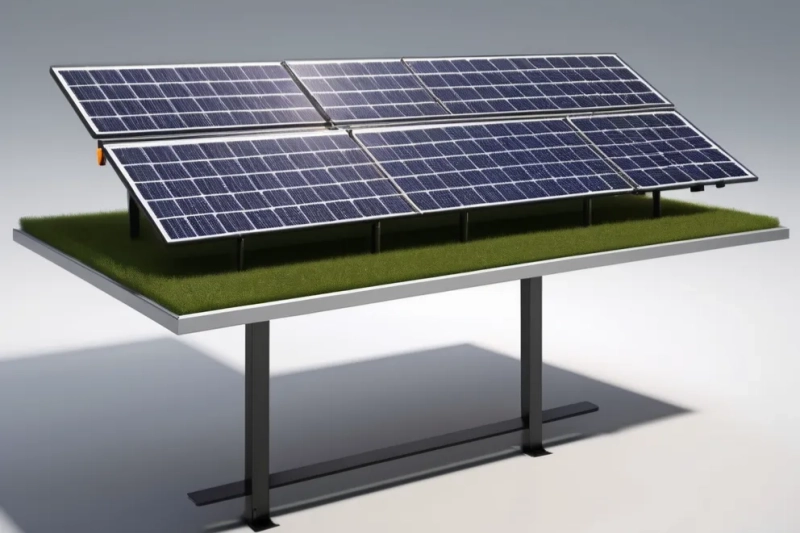As the demand for renewable energy sources grows, Building-Integrated Photovoltaics (BIPV) are gaining attention for their innovative approach to solar energy. This technology not only helps reduce energy costs but also enhances the aesthetic appeal of buildings. In this article, we will explore the concept of BIPV systems, their mounting systems, and factors affecting BIPV price. By the end, you'll have a comprehensive understanding of how BIPV systems work and their benefits.

Summary
Building-Integrated Photovoltaics (BIPV) systems integrate solar technology directly into building materials, serving a dual purpose of energy generation and architectural design. This article delves into BIPV systems, their mounting options, pricing considerations, and their overall advantages for modern construction.
What is a BIPV System?
BIPV systems are solar energy solutions that are integrated into building materials, such as roofs, facades, and windows. Unlike traditional solar panels, which are added to existing structures, BIPV products serve as both building elements and solar energy generators. This integration means that BIPV systems can help reduce reliance on fossil fuels while enhancing the aesthetic value of buildings.
The appeal of BIPV systems lies in their ability to produce renewable energy without compromising architectural design. They can be customized to fit various building styles and requirements, making them a versatile option for new constructions and renovations alike.
Advantages of BIPV Systems
Aesthetic Appeal: BIPV systems offer a modern and sleek appearance, allowing architects and builders to create visually appealing designs without the bulk of traditional solar panels.
Space Efficiency: By integrating solar technology into building materials, BIPV systems optimize available space, making them ideal for urban environments where land is limited.
Energy Savings: BIPV systems generate electricity that can be used on-site, significantly reducing energy costs and contributing to sustainability goals.
Dual Functionality: BIPV products fulfill both structural and energy-generating functions, eliminating the need for separate solar installations.
Types of BIPV Systems
BIPV systems can be categorized into several types, including:
BIPV Roofing: These systems integrate photovoltaic cells into roofing materials, providing a seamless look while generating electricity.
BIPV Facades: These are designed to replace traditional wall cladding with solar panels, creating an energy-efficient building envelope.
BIPV Windows: These advanced windows incorporate transparent solar technology, allowing natural light while producing energy.
BIPV Mounting Systems
BIPV mounting systems are essential for the installation and stability of BIPV products. Unlike traditional solar panels, which require racks or frames, BIPV systems are directly integrated into the building structure. However, specific mounting solutions are still necessary to ensure optimal performance and longevity.
Adhesive Mounting: This method uses special adhesives to attach BIPV panels to surfaces, providing a clean and streamlined look.
Structural Mounting: Some BIPV products are designed to be part of the building's framework, offering enhanced durability and stability.
Choosing the right mounting system is crucial for the overall performance of a BIPV system. It should align with the building design and local regulations while maximizing energy efficiency.
Factors Influencing BIPV Price
The price of BIPV systems can vary significantly based on several factors:
Material Costs: The type of materials used in the BIPV system can greatly affect pricing. High-quality materials may offer better performance but come at a higher cost.
Installation Complexity: More complex installations, such as integrating BIPV products into existing structures, can increase labor costs.
Scale of Project: Larger projects may benefit from economies of scale, reducing the overall price per unit.
Investing in a BIPV system is not just about the initial price. Over time, the energy savings and potential increase in property value can outweigh the upfront costs.
Conclusion
BIPV systems represent a significant advancement in solar technology, offering both energy generation and aesthetic benefits for modern buildings. By integrating solar technology into building materials, BIPV systems allow for creative architectural designs without compromising on sustainability. Understanding the different types of BIPV systems, their mounting options, and pricing factors can help buyers make informed decisions when considering solar energy solutions for their properties.
As the market for renewable energy continues to grow, BIPV systems are likely to become a more prevalent choice for eco-conscious builders and homeowners alike.
FAQs
1. What are the main benefits of a BIPV system?
BIPV systems offer aesthetic appeal, energy savings, space efficiency, and dual functionality by serving as both building materials and energy generators.
2. How do BIPV mounting systems work?
BIPV mounting systems can include adhesive or structural methods, ensuring that the BIPV products are securely attached and integrated into the building's design.
3. What factors affect BIPV price?
BIPV price can vary based on material costs, installation complexity, and the scale of the project. Higher quality materials and complex installations generally result in higher prices.

